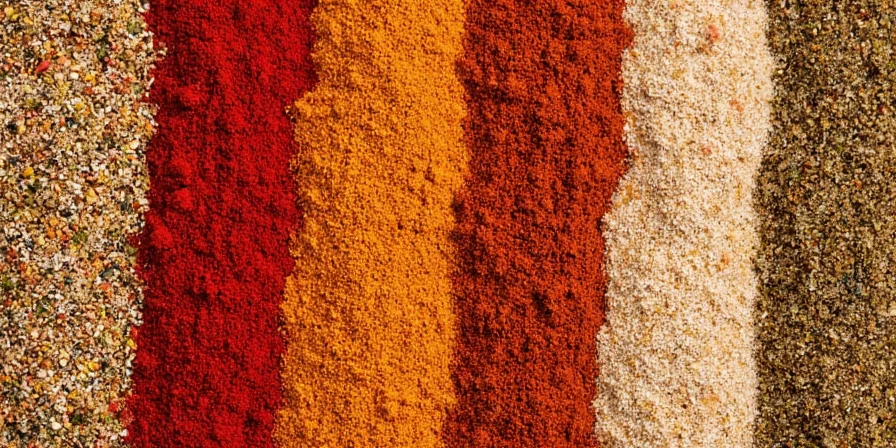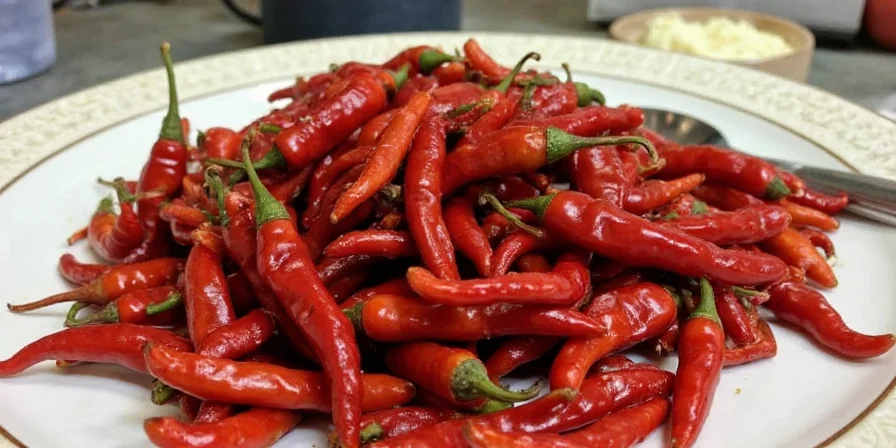Spice Chronicles: The Flavorful Regions of Mexico You Need to Know
Mexico—a land where spices dance, flavors sing, and heat hits you like a summer breeze on a chili farm. From the tropical coastlines to the highland valleys, each region of this vibrant country brings its own spice palette to the table (literally!). In this article, we’ll take you on a flavorful journey through the regions of Mexico, exploring how geography, history, and culture have shaped their iconic spice blends.
Table of Contents
- Introduction: Spice as Mexico's Soul
- Region 1: Oaxaca – The Land of Seven Moles
- Region 2: Yucatán – Citrus & Fire in the Jungle
- Region 3: Puebla – Where Mole Gets Its Mojo
- Region 4: Veracruz – Coastal Spices with Caribbean Flair
- Region 5: Jalisco – The Heart of Tequila and Salsas
- Practical Spice Tips for Your Kitchen
- Conclusion: Spice Up Your Life with Mexican Flavors
Introduction: Spice as Mexico’s Soul
If there’s one thing that defines Mexican cuisine beyond tacos and tequila, it’s the way they use spices. Unlike European cuisines that often rely on herbs, Mexico leans heavily into ground seeds, dried chilies, and toasted aromatics to build flavor. But not all spices are created equal—and where you are in Mexico makes a big difference!

Region 1: Oaxaca – The Land of Seven Moles
Oaxaca is the spice wonderland of Mexico, often referred to as the “Land of Seven Moles” (though there are more than seven—because why limit when you can add another layer of nutty, chocolatey, smoky deliciousness?).
Key Spices:
- Ancho Chili
- Guajillo Chili
- Cinnamon
- Almonds
- Dried Sesame Seeds
- Chocolate (yes, really!)
Why It Works:
The combination of roasted chilies, warm spices, and dark chocolate creates a complex sauce that dances between sweet, spicy, bitter, and earthy. Pro tip: Toast your sesame seeds before grinding them—it enhances the nuttiness tenfold.
Region 2: Yucatán – Citrus & Fire in the Jungle
In the jungles of the Yucatán Peninsula, spice doesn’t just come from chilies—it comes from citrus, annatto, and habanero fire. This region has a Mayan influence that blends indigenous ingredients with Spanish imports.
Signature Ingredients:
- Habanero Chili
- Annatto Seeds
- Lime Juice
- Cumin
- Orange Juice
Pro Tip:
Try making a traditional recado rojo (red paste) by grinding annatto, cumin, oregano, and vinegar. Use it to marinate pork for cochinita pibil—your taste buds will thank you.
Region 3: Puebla – Where Mole Gets Its Mojo
Puebla might be best known for being the birthplace of chiles en nogada, but it also lays claim to one of the most iconic moles: mole poblano.
Spice Breakdown:
- Pasilla Chili
- Bread (yes, bread!)
- Tomatoes
- Garlic
- Almonds
- Pepper

Fun Fact:
The inclusion of bread helps thicken the sauce naturally without overpowering other flavors. Think of it as the unsung hero of mole!
Region 4: Veracruz – Coastal Spices with Caribbean Flair
Veracruz is where Mexico meets the Caribbean. Influences from Africa, Spain, and indigenous groups blend together in a symphony of flavor. Here, spices are often paired with seafood, olives, and capers.
Common Spices & Herbs:
- Saffron
- Black Pepper
- Bay Leaves
- Parsley
- Thyme
Spice Hack:
Add saffron threads to hot oil before cooking rice or soups for a golden glow and subtle floral note. Just don’t overdo it—it’s expensive for a reason!
Region 5: Jalisco – The Heart of Tequila and Salsas
Jalisco gives us tequila, birria, and some seriously punchy salsas. Their approach to spice is bold, fresh, and meant to be shared at the family table—or with your taco truck crew.
Staple Spices & Ingredients:
- Jalapeño Chili
- Tomatillo
- Onion
- Cilantro
- Chili de Árbol
Kitchen Tip:
Roast your tomatillos and chilies before blending for deeper flavor in your salsa verde. And don’t forget the lime—it ties everything together!
Practical Spice Tips for Your Kitchen
Ready to bring some regional Mexican flair into your kitchen? Here’s a handy cheat sheet:
| Region | Signature Spices | Best For | Pro Tip |
|---|---|---|---|
| Oaxaca | Ancho, Cinnamon, Chocolate | Moles | Toast nuts and sesame seeds for extra depth |
| Yucatán | Habanero, Annatto, Lime | Adobos, Marinated Meats | Use orange juice in marinades for balance |
| Puebla | Pasilla, Almonds, Bread | Mole Poblano | Simmer slowly for richer texture |
| Veracruz | Saffron, Thyme, Bay Leaf | Seafood Dishes | Soak saffron in warm broth before adding |
| Jalisco | Jalapeño, Cilantro, Tomatillo | Salsas, Tacos | Char veggies before blending |
More Practical Tips:
- Always toast your dried chilies lightly before rehydrating—they release more aroma that way.
- Don’t throw out those chili stems—they can add depth to broths.
- Use lard or avocado oil for better absorption of fat-soluble spices.
- Store whole dried spices in sealed containers—grind only what you need.
- Pair heat with acid—lime juice or vinegar balances spiciness beautifully.
Conclusion: Spice Up Your Life with Mexican Flavors
Mexico isn’t just a country—it’s a flavor map written in spice, smoke, and sunshine. Each region tells a different story, influenced by climate, trade, and ancient traditions. Whether you’re savoring the deep complexity of Oaxacan moles or the fiery punch of a Jalisco salsa, there’s a whole world of flavor waiting to be explored.
So next time you're in the kitchen, don’t just follow a recipe—take a trip through the regions of Mexico. Let your senses guide you, experiment boldly, and remember: when it comes to spices, the more you know, the more you’ll want to taste.










 浙公网安备
33010002000092号
浙公网安备
33010002000092号 浙B2-20120091-4
浙B2-20120091-4